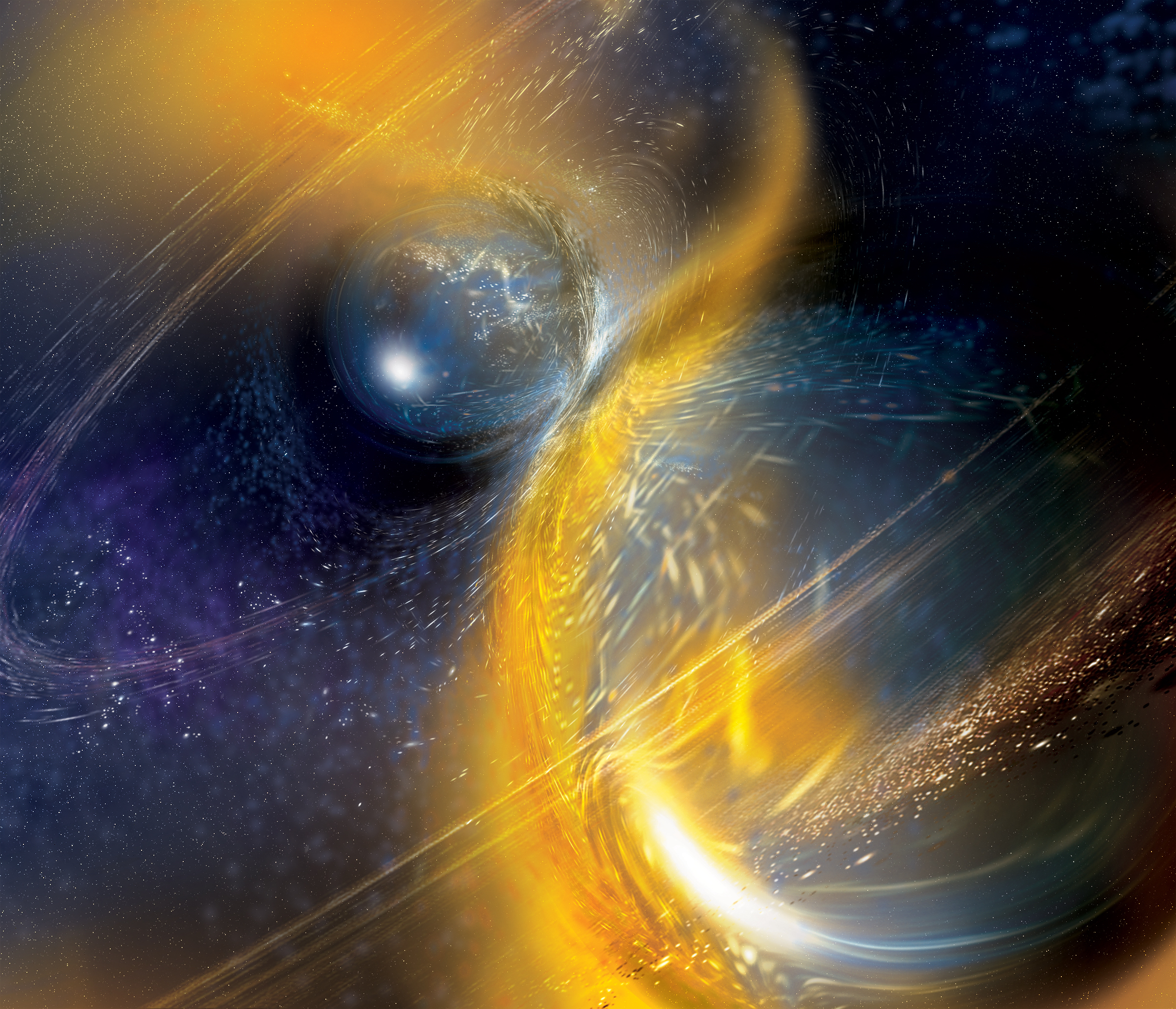Scientists Detect Waves in Spacetime From Biggest Known Neutron Star Collision

Credit to Author: Becky Ferreira| Date: Wed, 08 Jan 2020 14:26:43 +0000
Scientists have confirmed the detection of a ripple in spacetime created when two hyperdense objects, called neutron stars, collided 520 million light years from Earth. Together, the two neutron stars are about 3.4 times more massive than the Sun, making this system the biggest pair of neutron stars ever detected by scientists.
The discovery was announced during a press conference on Monday at the American Astronomical Society meeting in Honolulu, Hawai’i.
The system “far exceeds the mass of known neutron star binaries in our own galaxy," said Susan Scott, a theoretical physicist at the Australian National University, in a statement.
Neutron stars are the super-heavy husks left behind when giant stars explode into supernovas. These stellar corpses can contain up to about twice as much mass as the Sun inside a sphere with a radius of only 10 miles, give or take.
Roughly one in 20 neutron stars ends up in a binary system with another object, be it another neutron star, a regular star, or even a black hole, which is another kind of dead star. Astronomers have observed neutron stars that orbit each other in our own galaxy using conventional telescopes that pick up light radiation from these binaries.
Probing the mysteries of more distant neutron star binaries, however, requires the identification of gravitational waves. These waves are ripples in the fabric of spacetime created by significant cosmic events such as crashes between massive objects, or the explosion of large stars.
Fortunately, scientists have figured out how to detect gravitational waves with facilities such as the Laser Interferometer Gravitational-Wave Observatory (LIGO). In 2015, the LIGO team discovered the first gravitational wave in history, which was created 1.3 billion years ago by the collision of two black holes. The achievement earned the 2017 Nobel Prize for Physics.
Since that initial breakthrough, LIGO has detected several gravitational waves, including one discovered in August 2017 that was created by a merger between two neutron stars.
The newly announced detection, which is named GW190425, was picked up by LIGO in April 2019, making it only the second wave from a neutron star collision known to science. There is a small chance that one or both of the objects that created GW190425 is a black hole, but the best fit is a neutron star pair.
It took several months to confirm the detection and estimate the mass of the two objects, which turned out to be much heavier than any other known system of its kind.
"We were very surprised by the total mass of this ancient neutron star binary system,” said Scott. “This leads to the intriguing possibilities that the old binary system we've discovered formed differently to those observed in the Milky Way and that neutron star binaries this massive may not be detectable by current telescope surveys.”
To that end, gravitational wave observatories like LIGO will continue hunting for new detections that will cumulatively shed light on these mysterious interactions between extreme objects in the universe.
This article originally appeared on VICE US.